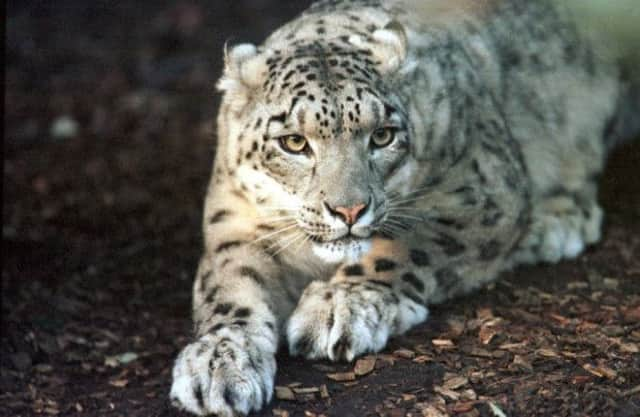Hopes for Scots snow leopards


Love is in the air for a pair of snow leopards at a Scottish wildlife park with Valentine’s Day coming this weekend.
Keepers hope that male snow leopard Chan will successfully pair with his female counterpart Animesh.
Advertisement
Hide AdAdvertisement
Hide AdIf they do, it will be the first time that snow leopard cubs have been bred in Scotland since 1998.
The pair first went on show for the public at the Highland Wildlife Park in Kingussie, Highlands, last summer.
To encourage the pair to breed, and in keeping with the Valentine’s Day spirit, keepers will suspend large cardboard hearts above their enclosure.
Experts at the park are hopeful of the possibility for cubs as it will contribute to the wider breeding programme for the species.
Snow leopards are an endangered species and are managed through the European Endangered Species Programme (EEP).
Douglas Richardson, head of living collections at the wildlife park, said: “Chan and Animesh have been getting on really well, so we think it’s only fitting that we give them a bit of Valentine’s enrichment to celebrate their pairing.
“The possibility of a litter of snow leopard cubs later in the year will obviously be a significant event for the Park, but it will more importantly be another step towards ensuring the health of the captive population as a safety-net against extinction in the wild.
“In addition to the conservation breeding role of the zoo-based snow leopards, they have a significant ambassadorial role which allows collections such as ours to raise awareness and funds to support the species’ conservation in the wild.”
Advertisement
Hide AdAdvertisement
Hide AdHowever, Douglas stressed that it is not an easy process to encourage snow leopards to breed.
He added: “There has been a decrease in reproductive success globally.”
Snow leopards were last bred in Scotland at Edinburgh Zoo in 1998.
The global population of the species has declined by at least 20 per cent in the last 16 years as a result of poaching, human encroachment and the reduced numbers of prey.
There are only 3,500 to 7,000 snow leopards estimated to be left in the wild, while there are around 400 in zoos around the world.
Wild snow leopards are typically found in the mountainous regions of central Asia.